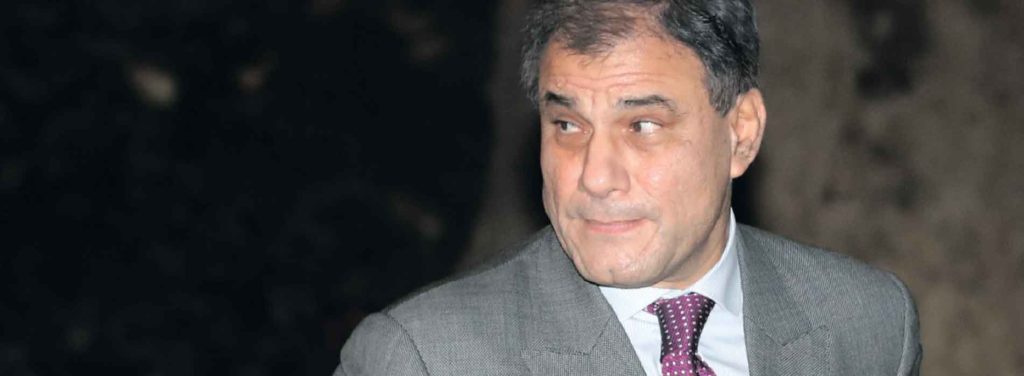Journey from kirana to boardroom
British-Indians who once dominated kiranas are now in corporates, Parliament, on TV and represent the nation abroad

Lord Karan Bilimoria
Can a grocery store capture the essence of a country and a community’s social and political life? Yes. Indians once dominated the corner shop, the British version of the closely stocked jumble that is the kirana store at home. But they are increasingly moving away from minding the cash register, a change that tells part of the story of Indian engagement with post-colonial Britain. There is a new self-confidence in the relationship. It might almost be a template for the broader bilateral equation.
Babita Sharma, a British-born BBC television journalist, has written a book that illustrates part of that story of change. The Corner Shop: Shopkeepers, the Sharmas and the making of Modern Britain explains the process by which Indian immigrants went from manual workers to shopkeepers to educated professionals. Sharma’s parents, Ved and Prem, left India for Britain within 25 years of the end of the Raj. They came in response to an invitation from a Britain that was desperately seeking workers from the Commonwealth. They took what jobs they could find — in factories keen to hire anyone willing to work long hours. But soon enough, the Sharmas became shopkeepers in Reading, in south-east England.
It was one of the ways Indians in 1970s Britain could escape workplace racism, enjoy a level of autonomy and use their business acumen and entrepreneurial skills to provide for a young family. Within a couple of decades, the Sharmas owned three corner shops, had seen Babita and her two sisters through university and launched them in professional careers. Then, they shut shop and retired, content to have given their children a shot at a better life. The corner shops once owned by families such as the Sharmas are now run by more recent immigrants — from conflict-scarred Sri Lanka and Afghanistan and new European Union (EU) member-state Poland. The Indians have, literally and metaphorically, moved on.
The changes in Britain’s corner shops — 30,000 and counting — do say something profound both about Indians and the UK. “The story of corner shops is the story of who we are,” Sharma tells Firstpost. The Indians reimagined Britain’s corner shops very differently from what they were when Margaret Thatcher’s father ran a grocer’s and general store. In the process of that reimagining, says Sharma, the Indians changed the way Britain shopped, ate and understood itself.
Karan Bilimoria, now a member of the House of Lords, reinvented the beer. His Cobra brand is now known around the world. The late Gulam Noon, who arrived in the mid-1960s and made his fortune with the chicken tikka masala ready meal, changed British dining. He came to be known as the ‘Curry king’.
The Indians changed the demographics. Thatcher’s Britain was very white but the country to which the Sharmas and Noon came was visibly browning. The 1961 UK census recorded 166,000 Indian-born Britons, but that figure probably included more than 100,000 white Britons. The last census, in 2011, recorded 1.4 million British-Indians, and some estimates put the figure today at close to two million.
Sharma says Britain adopted the omnibus term “Asian shopkeeper”, but it mainly referred to immigrants from recently independent India and later included Indians fleeing Idi Amin’s Uganda. Somewhere along the way, the corner shops got categorised as “Paki”, which was inaccurate because Indians, not Pakistanis, dominated retail. Over the course of half-a-century, Britain went from inviting Indians to work — 75,000 New Commonwealth citizens a year in the 1960s — to restricting work options for Indian students graduating from UK universities.
Sharma notes the long arc of attitudinal change. Twenty-first century Britain’s view of immigration is distinct from that in the 1980s, but in some ways, it is a distinction without a difference. The skinheads of the 1980s called for “white jobs for white people”. Today, the mantra is “British jobs for British people” with the 2016 Brexit vote indicating a new and troubling insularity that is anecdotally, and somewhat shockingly shared by British-Indians.
In the 1980s, says Sharma, “the Asian shopkeeper was used as a political pawn by both the Conservatives and the Labour Party”. Today, British politics is less focussed on the Sharmas, Singhs and Patels, many of whom are in corporate boardrooms, in Parliament, on television and represent Britain overseas. British-Indians are considered a model minority. More than a quarter of British-Indian students in England go on to a top-flight university compared with 15% of their white British classmates. Although British-Indians are barely 2% of the population, they account for 12% of all doctors in the UK.
As a second-generation Indian, Sharma is acutely conscious of the nature of belonging. In university canteens in the 1990s, students of Indian ethnicity like her always said they were British unlike those of Pakistani or Bangladeshi origin. “I don’t know why that was, but we might not get the same answers today,” she says. It is a nod to rising Hindu nationalist sentiments among the diaspora and a sign that the umbilical cord linking the community to the motherland was never quite severed.
Rashmee Roshan Lall is an international affairs columnist based in LondonOriginally published in First Post

